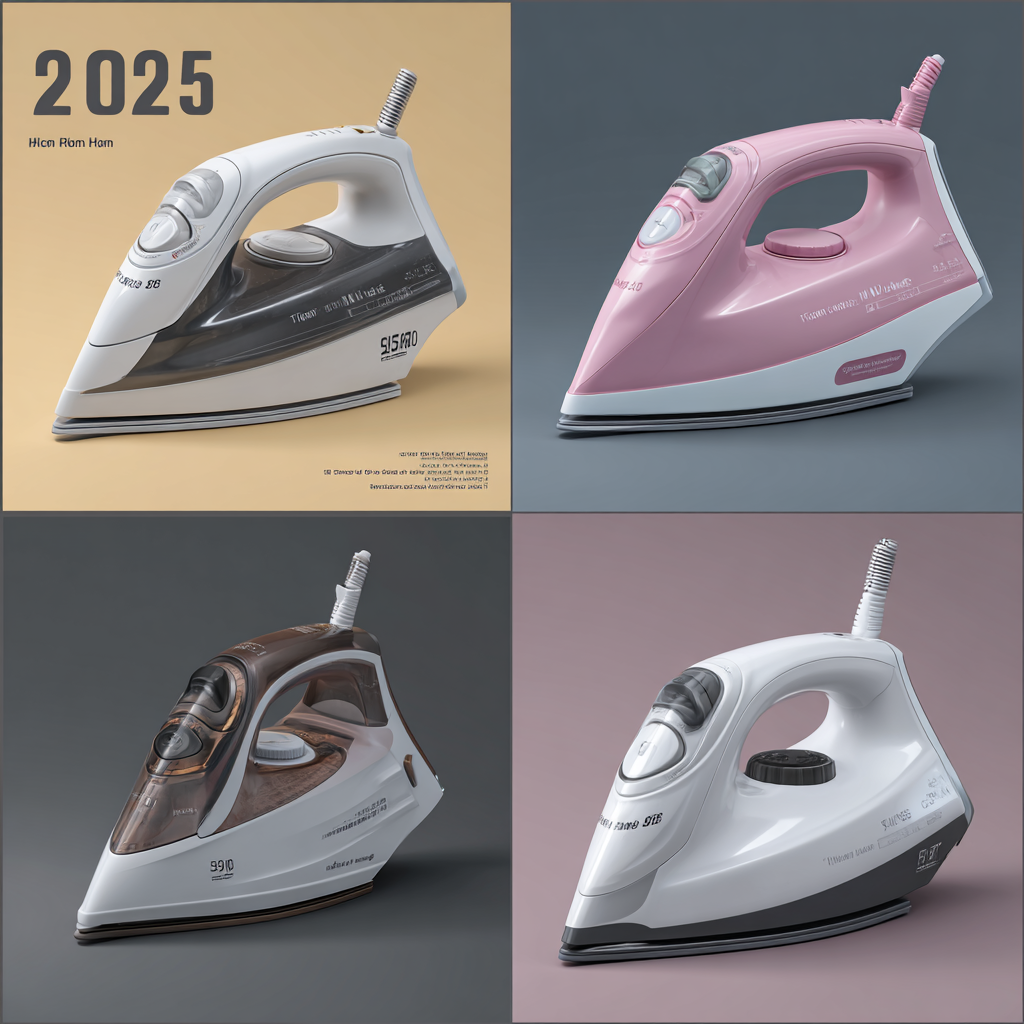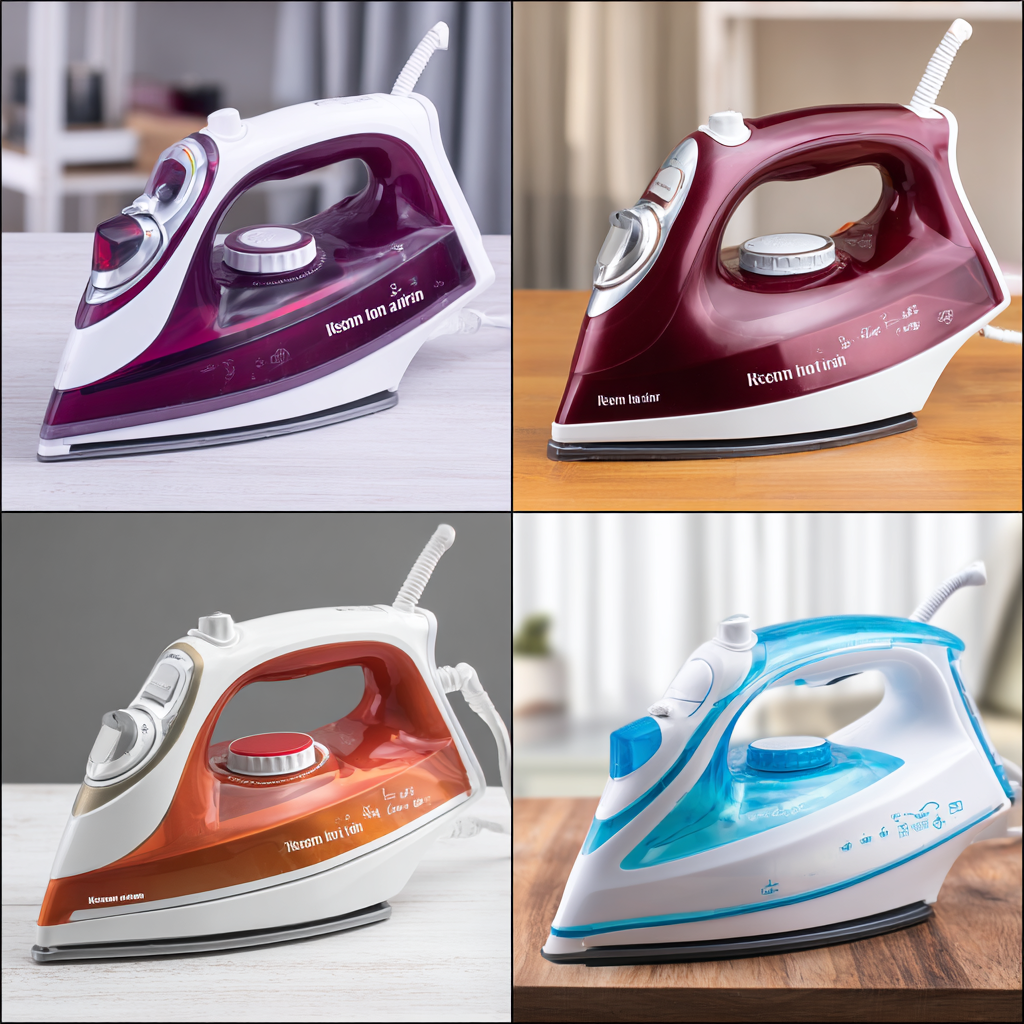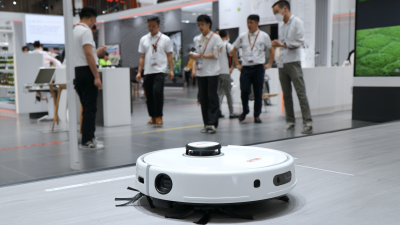In recent years, the demand for electric irons has significantly increased, reflecting an evolving trend toward the need for efficient home appliances. According to a report by Market Research Future, the global electric iron market is projected to grow at a CAGR of 4.5% between 2020 and 2027, highlighting the essential role these devices play in daily household tasks. As lifestyle changes and the rise of smart home technology continue to influence consumer choices, it becomes essential to identify the right electric iron that caters to individual needs.
Choosing the best electric iron for your home is not merely a matter of brand recognition; it involves understanding specific features and functionalities that cater to different types of fabrics and ironing requirements. With advancements in steam technology and energy efficiency, modern electric irons have transformed the ironing experience, making it quicker and more effective. A recent consumer survey found that 72% of respondents prioritize steam output and ease of use when selecting an electric iron, underscoring the importance of making an informed choice. As we navigate through the myriad options available on the market in 2025, understanding these critical factors will empower consumers to select an electric iron that best fits their lifestyle and ironing habits.

When selecting the best electric iron for your home needs in 2025, it’s essential to focus on key features that enhance performance and usability. One critical factor is the wattage of the iron; higher wattage typically translates to faster heating times and better steam output. A powerful steam function can make a significant difference in removing creases and wrinkles efficiently, especially for heavier fabrics. Look for irons that offer adjustable steam settings, allowing you to customize the steam level based on the fabric type.

Another important feature is the soleplate material. A smooth, high-quality soleplate ensures easy gliding over clothes and prevents snagging. Options like stainless steel or ceramic are popular for their durability and non-stick properties. Additionally, consider the iron's weight; lighter models are easier to maneuver but may require more passes to eliminate tough wrinkles. An ergonomic handle is also essential for comfort, particularly during extended ironing sessions. Don't forget to check for safety features such as an auto shut-off function, ensuring peace of mind when leaving the iron unattended.
When selecting the best electric iron for your home, it is essential to understand the different types available on the market. The most common types include steam irons, dry irons, and cordless irons.
 Steam irons are designed to release steam during the ironing process, making them ideal for removing wrinkles from various fabrics. They are particularly effective on heavier materials like linen and cotton, where steam helps to relax fibers for a smoother finish.
Steam irons are designed to release steam during the ironing process, making them ideal for removing wrinkles from various fabrics. They are particularly effective on heavier materials like linen and cotton, where steam helps to relax fibers for a smoother finish.
Dry irons, on the other hand, do not have a steam function and are generally lighter and simpler to use. They are perfect for lightweight fabrics and offer more control for delicate garments. Lastly, cordless irons provide the convenience of maneuverability without being tethered to a power outlet.
They heat up quickly and can be used freely, making them a favorite for those who prioritize efficiency and ease of use. Understanding these types will help you choose an iron that best meets your specific needs and ironing habits.
When choosing the best electric iron for your home needs, balancing price and quality is crucial. While many budget irons claim to offer good performance,
industry reports indicate that spending a little more can often yield significant improvements in durability and efficiency.
A recent consumer report highlighted that models in the mid-price range typically outperform cheaper counterparts by 25% in terms of steam output and soleplate technology,
essential for effective wrinkle removal.
Tips: When evaluating options, prioritize features such as adjustable heat settings and soleplate material.
Ceramic and stainless steel plates are known for their superior glide and heat retention.
Additionally, look for models with automatic shut-off for safety, which is a standard in many higher-end irons.
As with many consumer products, young buyers are increasingly seeking recommendations before making a purchase.
A survey showed that nearly 70% of consumers prefer to consult reviews and expert opinions to ensure they achieve the right balance of price and quality.
Investing wisely in an iron can save both time and money in the long run, aligning with the growing trend of value-driven purchases among today’s savvy shoppers.
When selecting the best electric iron for your home needs, user reviews and ratings play a crucial role in making an informed decision. These insights provide real-world experiences from other consumers, highlighting both the advantages and drawbacks of specific models. By closely examining reviews, potential buyers can gauge the reliability, ease of use, and performance of various irons, ensuring they choose a product that meets their requirements.
Additionally, ratings often reflect the overall satisfaction of users over time. A high rating commonly indicates that an iron consistently delivers good results, while countless negative reviews may signal recurring issues. It's essential to consider not just the quantity of reviews, but also the quality and detail provided by users. By synthesizing this information, consumers can navigate through the myriad of choices available in the market and select an iron that will best suit their ironing needs and lifestyle preferences.
This chart illustrates user ratings for different features of electric irons based on recent reviews. The data represents customer satisfaction levels on a scale of 1 to 5 for key features such as Heating Speed, Weight, Ease of Use, and Steam Power.
To ensure your electric iron serves you well for years, proper maintenance is crucial. Start by regularly cleaning the soleplate, which is the flat surface that comes into contact with clothes. Over time, fabric fibers and mineral deposits can accumulate, leading to uneven heating and possible staining. Use a mixture of baking soda and water to create a paste, gently scrub the soleplate with a soft cloth, and wipe clean to restore its smooth finish.
Additionally, always empty the water tank after each use. Leaving water in the tank can result in mineral buildup, which may clog the steam vents and diminish the iron's steam capabilities. If your iron has a self-cleaning feature, use it as directed to minimize residue build-up. Finally, store your iron in an upright position and avoid exposing it to extreme temperatures, which could damage internal components and affect performance. By following these simple maintenance tips, you can prolong the life of your electric iron and keep it functioning efficiently.
| Feature | Description | Maintenance Tips |
|---|---|---|
| Steam Output | The amount of steam produced to remove wrinkles effectively. | Regularly clean the steam vents to prevent clogging. |
| Soleplate Material | Materials such as stainless steel or ceramic affect glide and durability. | Avoid using abrasive cleaners; wipe with a soft cloth to maintain smoothness. |
| Weight | Heavier irons provide better pressure for more effective ironing. | Store upright to prevent shifting of internal components. |
| Temperature Control | Adjustable settings for different fabric types. | Calibrate settings periodically to ensure accurate temperature. |
| Cord Length | A longer cord offers more flexibility while ironing. | Wrap the cord neatly after use to avoid tangling. |
| Safety Features | Automatic shut-off and anti-drip systems enhance safety. | Test safety features regularly; replace if faulty. |





